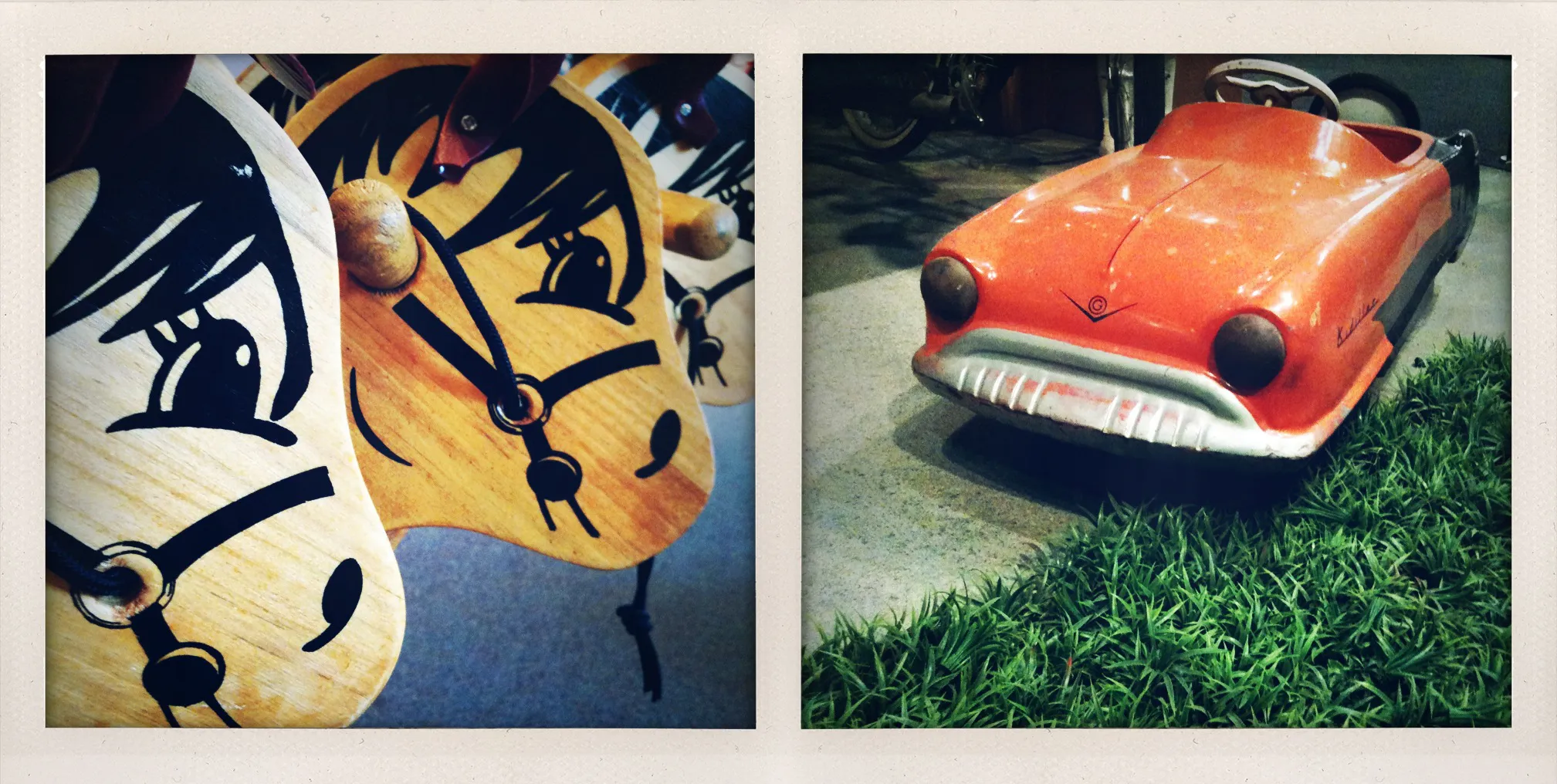Horse Story Repeats Itself

This diptych pairs mid-century children’s toys—wooden horses and a metal pedal car—photographed in their current institutional contexts: a gift shop at Mount Vernon and a museum exhibition. The work traces how the historical shift from equine to automotive transportation was mirrored in the objects children used for imaginative play.
The grouped wooden horses, with their stylized painted faces and bridles, reference pre-industrial mobility and romanticized Western imagery. The solitary pedal car—streamlined and glossy—embodies the postwar automotive age and the promise of individual freedom through machines. The visual contrast between clustered repetition and singular vehicle mirrors broader cultural values shifting toward individualism and mechanized modernity.
The title’s play on repetition points to how history reasserts itself in miniature: as horses gave way to cars in the real world, so too did they in the realm of toys. By photographing these objects as artifacts within museum and commercial spaces, the work examines how institutions preserve and commodify these narratives. What children rode reflected the world their parents inhabited—toys as compressed cultural memory.
Essay written: November 2025